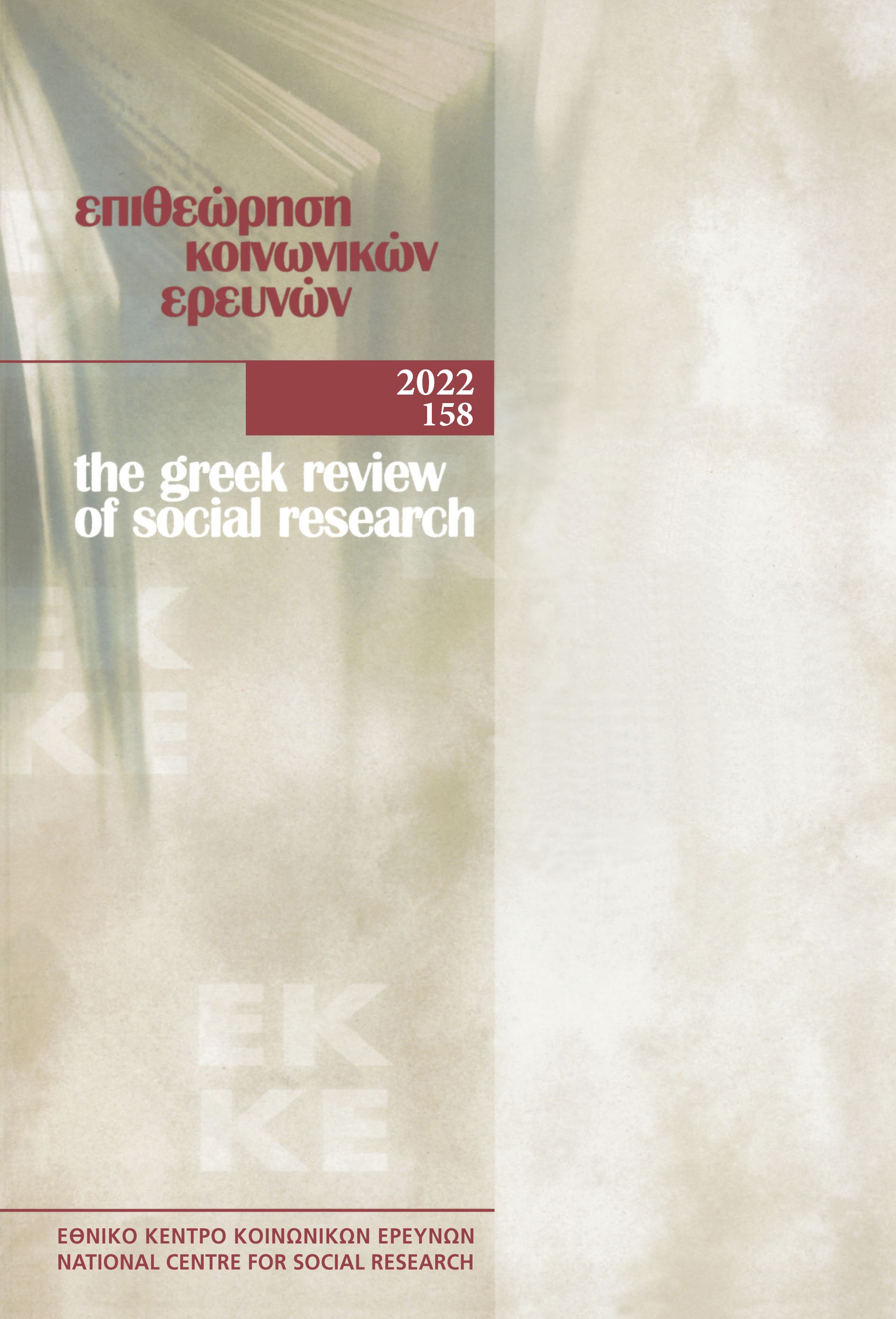Investigating the demographic “profile” of the European Socio-economic Classification (ESeC) for Greece, 2002-2010

Abstract
In social sample survey research and the census, international classifications have been developed for the measurement of background variables ensuring overtime and cross-national comparability. In this respect, Eurostat developed the European socio-economic classification (ESeC) for the study of the social structure evolution and social change. However, the theoretical conception of this schema has been criticized especially for its implementation in Southern Europe. In this paper, we assess the implementation of ESeC by investigating its demographic “profile” in Greece. The analysis is based on the 2002, 2004, 2008 and 2010 European Social Survey datasets for Greece.
Article Details
- How to Cite
-
Yfanti, A. (2022). Investigating the demographic “profile” of the European Socio-economic Classification (ESeC) for Greece, 2002-2010. The Greek Review of Social Research, 158, 135–162. https://doi.org/10.12681/grsr.29400
- Issue
- 2022: 158
- Section
- Articles

This work is licensed under a Creative Commons Attribution-NonCommercial 4.0 International License.
Authors who publish with this journal agree to the following terms:
- Authors retain copyright and grant the journal right of first publication with the work simultaneously licensed under a Creative Commons Attribution Non-Commercial License that allows others to share the work with an acknowledgement of the work's authorship and initial publication in this journal.
- Authors are able to enter into separate, additional contractual arrangements for the non-exclusive distribution of the journal's published version of the work (e.g. post it to an institutional repository or publish it in a book), with an acknowledgement of its initial publication in this journal.
- Authors are permitted and encouraged to post their work online (preferably in institutional repositories or on their website) prior to and during the submission process, as it can lead to productive exchanges, as well as earlier and greater citation of published work (See The Effect of Open Access).


